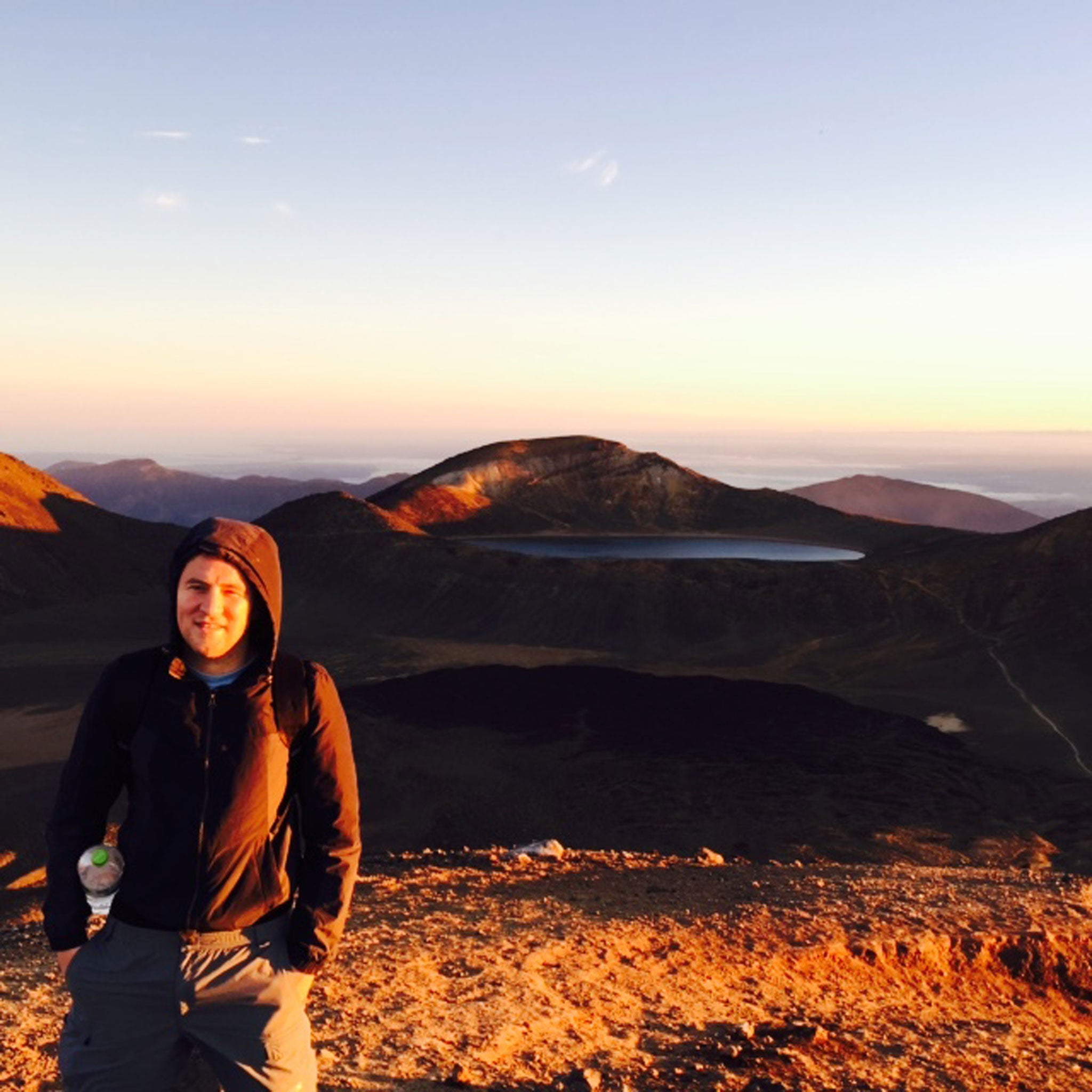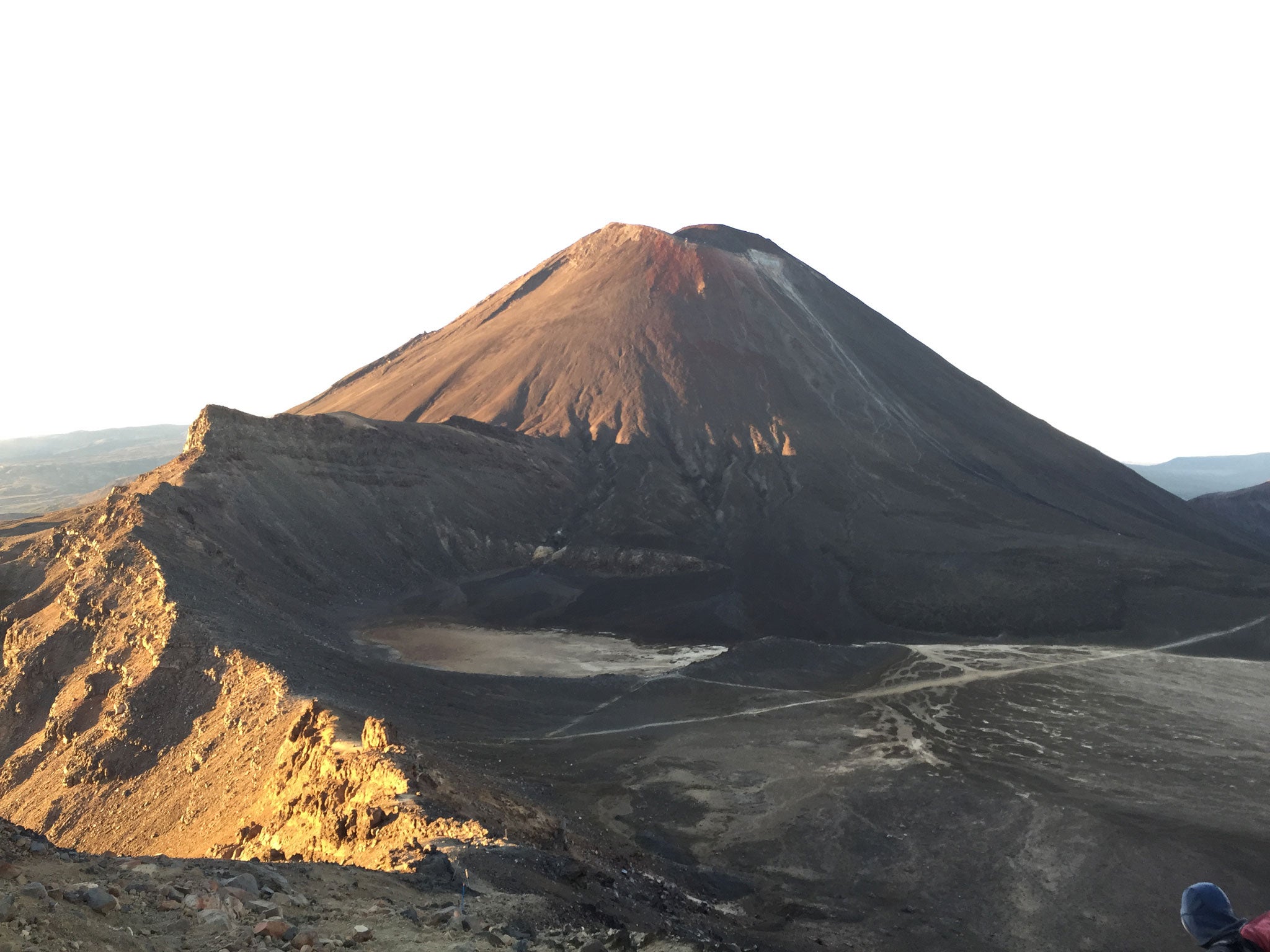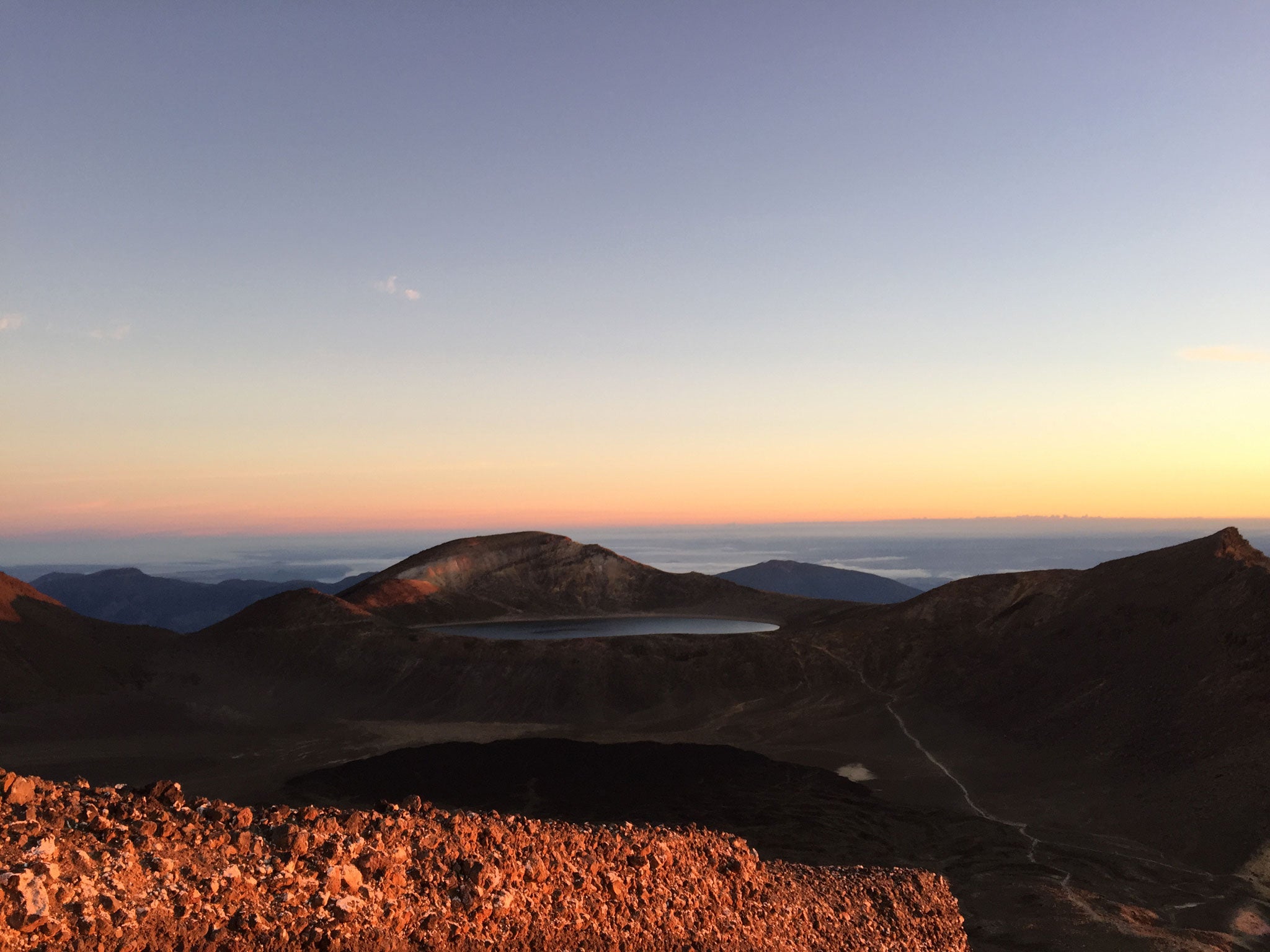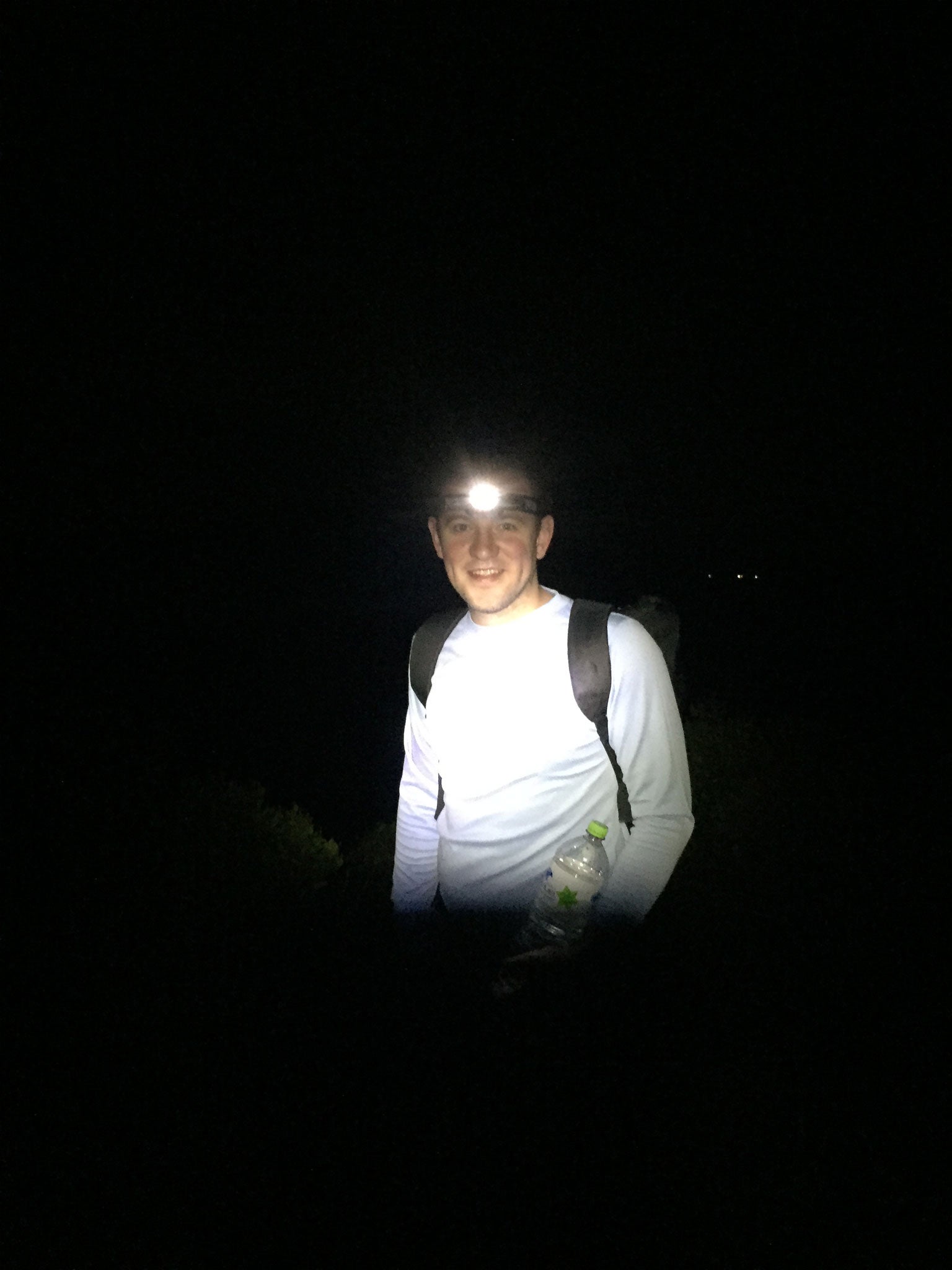The Independent's journalism is supported by our readers. When you purchase through links on our site, we may earn commission.
Outflanking the Tolkien fans on New Zealand's Tongariro Alpine Crossing
Mt Ngauruhoe featured as Mount Doom in Peter Jackson's film version of The Lord of the Rings and forms the centrepiece of the Tongariro Alpine Crossing

Frodo Baggins, being a Hobbit, does like to make a meal of things. Three entire movies, each of at least a decade in length, document his little journey to Mordor (apparently there are some books about it, too). What no one deigns to mention – and it's not like they don't have the time – is that the quest to reach the fires of Mount Doom is undergone by more than a thousand people a day, at least during peak season. Before Peter Jackson and his film crew rolled into town, it went by the humble name of Mt Ngauruhoe, the fearsome volcano which forms the centrepiece of New Zealand's Tongariro Alpine Crossing.
Yes, this little part of Middle Earth – in real life, the volcanic heart of the North Island – has had a population density crisis on its hands since long before the dark lord Sauron started knocking up his 10,000-strong Orc army there.
There is, however, a way to avoid the crowds. And that is to rise at 1am and do the country's most popular day walk backwards, with only the light of the moon and the Milky Way to guide you, and just the odd hoot of a morepork for company.
The morepork, of course, is what New Zealanders call the Tasmanian Spotted Owl. It is the only creature of note that lives in the forests that form Tongariro's lower reaches. Apart from bats, New Zealand has no native mammals. Rabbits and possums are the only creatures to have any real success in evading the country's extensive and expensive efforts to keep its reserves as they have always been.

There is one other invasive species here – the human. But for the next seven hours, I, my guide Stew, and two other nocturnal walkers would be the only bipedal creatures around. By day, when armies of walkers throng the track from end to end, a guide is a luxury; by night, it is a necessity. Stew collected me from my hotel at the jetlag-friendly hour of 1.30am for the 20-minute drive to Ketetahi, traditionally the crossing's exit.
While many day-trippers begin their Tongariro experience with an hour-long bus ride from nearby Taupo, for sunrise walks it's best to stay in the unimaginatively named National Park Village – a diminutive quadrangle of four roads, a smattering of guest houses and two restaurants in the imposing shadow of three active volcanoes.
The 1am wake-up call is not the only price you pay for solitude. Starting at the end makes an already tough eight-hour walk significantly tougher, increasing the total climb from 800m to 1,100m, stretched over 13 miles. And, for the first couple of hours, the iridescent greens and blues of Lake Taupo are shrouded in mist and blackness.

But there is drama in the dark. Clouds hang in pools between the lake's tiny islands. The moon is a gleaming wedge of lemon, silhouetting the black profile of the mountains against the gunmetal sky. The Milky Way swirls, plumes of steam rise from the volcanoes and the stars are out in mesmerising numbers.
We are aiming for the Red Crater, at 1,886m, the high point of the crossing in time for sunrise. If we make it, we will see the famous Mars-red vistas, the towering volcanoes and the Emerald Lakes at their most beautiful, and without a phalanx of walkers wielding selfie sticks. But it won't be easy.
For the first two hours, we have to wear head-torches to light the way, which leads through bushes thick with manuka flowers, crucial ingredient in the world's most prized honey.
A hut is the first sign of civilisation we see. No one sleeps in it any more. Stew, who is 57 (an accountant once upon a time) and has made this trip more than two thousand times, shines his light through the window to reveal a hole in the wooden floor. There could easily have been a tourist asleep below it, on 6 August 2012, when debris from the most recent eruption of Mount Tongariro came crashing through it.

From here, the climb becomes a little less arduous, and the fading stars intimate that the sun is stirring. The first light illuminates the Blue Lake, a great wide crater, full of water fresh enough to drink. But we must press on.
The final 20 minutes are a brutalising scramble up steep, soft scree which, Stew claims, he "doesn't have the legs for any more," and encourages me to go on ahead. Except that, eight minutes later, he is idling away at the summit, and I am digging my feet yet further into the shifting sand and omitting loud, agonising groans with every other step.
With around 90 seconds to spare, I make it, and sit my exhausted backside down on the hot, volcanic earth. Though it is only mankind that has designated it such, here, just west of the international dateline, this is still the world's first sunrise.
The red slopes of Mount Doom are glowing suddenly orange, at the foot of the sky there is a thick gold bar, pressed against the earth. And we are still alone.

On the descent, which skirts the slopes of Mount Doom (fanatical Tolkienites can add on an extra, gruelling, three-hour grind up and down it), Stew tells us that he worked as a driver on the movies when Peter Jackson, Elijah Wood, Ian McKellen and co were in town. Yet even he, to his eternal credit in my view, hasn't got round to watching all three films.
At 22 minutes past seven, when we are long down the other side, walking what is known as the Devil's Staircase (decidedly less devilish when walked this way round), before joining the slatted boardwalk-style track that leads to the car park, we encounter the first of the masses on the way up. He is a teenage boy, at least 10 minutes ahead of his parents, going like the clappers, desperate to be first. We are a sight he cannot compute.
Though I'm not completely certain – I only ever had the stamina for Part One – I imagine Frodo's journey finally ends back in The Shire in an orgy of backslapping, a cup of tea and a biscuit. In our case, we are back in the Mangatepopo car park by five to nine, eating bacon-and-egg sandwiches and drinking unquestionably the most deliciously satisfying icy cold beer I have ever tasted. All around us the buses are arriving, the doors opening, the Gore-Tex-covered Orcs are piling out, and the battle for Middle Earth is on. Except we've already won it.
***
Adrift offers guided sunrise tours of the Tongariro Crossing for $NZ279 (£142) p/p, plus a range of other walks (adrift.co.nz)
Tom stayed at Tongariro Crossing Lodge. Sttandard double rooms from $NZ150 (£76) or family suites from $NZ205 (£104)
Car hire from Auckland airport from just £20 per day from carrentals.co.uk
Tom travelled to New Zealand on Air New Zealand. London to Auckland return on the airline's Skycouch seats from £1,247. Airnewzealand.co.uk
Join our commenting forum
Join thought-provoking conversations, follow other Independent readers and see their replies
Comments